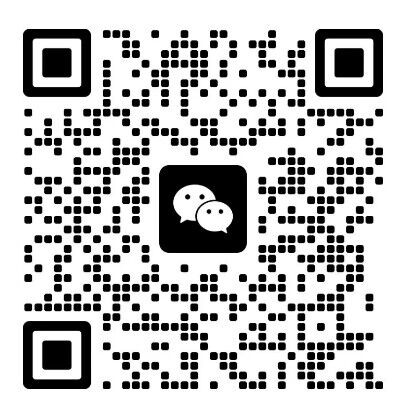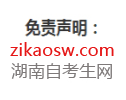湖南自考生网为考生提供:湖南自考英语毕业论文:Literary Review of Doris Lessing and The Golden Notebook ,该论文仅供参考。另外,湖南自考生网友情提醒各位考生:每年各校论文要求格式不同,请以各校格式为准,排版好你的论文,格式非常重要!据以往湖南自考生网指导老师经验,论文格式不对,基本无法及格。需要申请学士学位的考生,论文成绩必须达到良好!湖南自考生网自2014年起,为长线自考生提供代办毕业申请服务,需要办理毕业申请的考生可直接在线咨询湖南自考生网指导老师。
Abstract
The Golden Notebook is the most famous work by Doris Lessing. It is remarkable for its rich characterization, sharp political and social criticism, and original experiment on the novel form. The thesis mainly focuses on the significance of Lessing’s experimentation on the novel form.
Doris Lessing reflects upon and explores the relation between representation of reality and novel forms in the book. Based on the shaping principles by Cubism, the most influential Western art movement in modern times, she constructs the novel form of The Golden Notebook. The principles include the union of time and space, multiplicity of perspectives in representing reality and reflexivity in literary and art creation and observation.
The paper expounds the argument from three aspects. Chapter One traces the historical evolution of novel forms and highlights the originality of the novel form in The Golden Notebook. Chapter Two illustrates the close relation between novel and painting and specifies the parallel relation between the novel form in The Golden Notebook and Cubism. Chapter Three analyses in detail the novel form of The Golden Notebook and its parallel relationship with Cubism in terms of shaping principles and dynamics.
The interdisciplinary perspective employed in the thesis intends to provide a different reading and research orientation in evaluating the novel form.
Key words: Cubism; novel form; representation of reality; shaping principle; simultaneity; multiplicity; reflexivity
Introduction
After many years of toiling in writing, Doris Lessing has now safely established herself as being “the most extraordinary woman writer” (Greene, 1994: 1) and “very much a representative writer for our time” (Bloom, 1986: 7). Her major work The Golden Notebook has been ranked by many critics as “one of the most powerful of post-war British novels” and “the most remarkable work by a woman to appear in Britain since Virginia Woolf’s” (Bradbury, 2004: 381).
Doris Lessing’s critical reputation is remarkable from the very beginning of her literary career. Her success as a professional writer began with the publication of her first novel The Grass Is Singing. It was accepted by Michael Joseph in London in 1950 and was an instant success, being immediately recognized as an exceptional novel on colonialism. “I had very good reviews, and I had enough money to keep me going for a bit” (Bookshelf, 1992), as Doris Lessing recalled her early success in an interview by BBC Radio. Her fame has gained steadily ever since.
It took Lessing nearly two decades following her first novel to write her next important work, the series of Children of Violence, between 1952, when Martha Quest was published, and 1969, when The Four-Gated City appeared. In the context of postwar retreat to the conventional and the conservative, The Children of Violence was “something new” (Greene, 1994: 15) indeed. It focuses on Martha Quest’s difficult, painful process of educating herself in search of true identity. Despite its conventional form, the vivid depiction of Martha’s growth in consciousness evokes the warm sympathy from many readers, especially young women who seemed to have undergone similar frustration. True to what Jenny Taylor observes, “Martha’s quest became the epic, archetypal story of our times” (Taylor, 1982: 5).
With the publication of The Golden Notebook, Lessing seems to have reached the peak of her literary fame. The impact it brought to readers as well as critics is tremendous. Gayle Greene frankly evaluates it as “a transformative work and touchstone for a generation” (Greene, 1994: 17).
Despite her intention of minimizing feminism both as a historical and a contemporary influence on her writing, Lessing is regarded as one of the early voices of the feminist movement, and The Golden Notebook one of its key texts. Margaret Drabble hails The Golden Notebook as “a document in the history of (women’s) liberation”(Showalter, 2004: 311). “It was the first book I’ve read, apart from Simone de Beauvoir’s Second Sex, which seemed to be really addressing the problems of women in the contemporary world,” says Margaret Drabble, “Nobody seemed to have written about them in the way that we were experiencing them” (Bookshelf, 1992). Showalter uses the word “monumental” to highlight it among the works of twentieth-century women writers. She interprets the novel as “the work of essential feminist implications” (Showalter, 2004: 311). Elizabeth Wilson describes it as “a manual of woman experience” (Wilson, 1982: 71). Susan Lardner calls it “a feminist gospel, a representative of Modern Woman” (Lardner, 1983: 144). Susan Lyndon describes it as “almost a Little Red Book of women’s liberationists,” “probably the most widely read and deeply appreciated book on the women’s liberation reading list, Simone de Beauvoir’s The Second Sex and Betty Friedan’s The Feminine Mystique notwithstanding” (Lyndon, 1970: 48). Ellen Brooks describes Lessing’s depiction of women as “the most thorough and accurate of any in literature” (Brooks, 1973: 101).
However, Doris Lessing herself is somewhat indignant with such critical categorization. In the 1971 introduction to The Golden Notebook, she clarifies that “the novel was not a trumpet for Women’s Liberation” (Lessing, 1975: 25). She declares that rather than the sex war, the theme of “breakdown” was the point she aimed at in her novel. She questions the validity of grouping her and her work into feminism and the Women’s Liberation Movement by pointing out that the novel came out ten years earlier than the launching of the Movement (Lessing, 1975: 24).
While women are thrilled to find themselves truly depicted and named in the book, the novel receives very different readings from men. To be sure, some men recognize its importance. For example, Louis Kampt describes Lessing’s massive novel as a “significant and exemplary attempt to deal with,” “the central questions of modernism” and “a very true, and very great work of art” (Kampt, 1967: 322,326). Robert Taubman believes it is “unique in its truthfulness and range” (Taubman, 1964: 402). And Irving Howe calls it “the most absorbing and exciting piece of new fiction I have read in a decade” (Howe, 1986: 181). But most other male critics and reviewers find some ways to discount it. Anthony Burgess laments and dismisses The Golden Notebook as “a crusader’s novel,” “unacceptable as a work of art” (Burgess, 1967: 19). P.W. Frederick McDowell similarly criticizes the novel, saying that it is “disorganized,” “subjective” and “a cross between a standard novel and a confession” (McDowell, 1965: 330). Other critics concede that The Golden Notebook has interest for what is revealed about women’s lives but deny that it is art. Walter Ellen concludes that the novel “fails as a work of art” and “the structure is clumsy, complicated rather than complex” (Ellen, 1964: 277). Frederick Karl calls it “the most considerable single work by an English author in the 1960s,” but he too dismisses it on purely literary grounds as “a carefully organized but verbose, almost clumsily written novel” (Karl, 1971: 291). James Gindin, one of the first critics on Doris Lessing, criticizes Lessing’s tendency to condition her characters historically, which suggests an aesthetic shortcoming in creating unforgettable characters that may transcend time and place (Gindin, 1986: 24). Even Harold Bloom, the chief editor of Modern Critical Views, suggests in his introduction to the book that Doris Lessing lacks the style that a piece of art may need when he remarks “Lessing has the spirit, if not the style, of the age” (Bloom, 1986: 7).
More recent criticism shares Doris Lessing’s denial of The Golden Notebook as a feminist text. And many critics are aware of its scope which goes beyond feminist concerns. Ruth Whittaker remarks that reading The Golden Notebook is that of absorbing several different novels (Whittaker, 1988: 75). This observation is true because people’s responses vary according to their process of growth and changing perceptions. And The Golden Notebook is credited with the title of an “encyclopedia of ideas” (Greene, 1994:
TEL:蒋老师17773102705
扫一扫下方二维码关注湖南自考生网微信公众号、客服咨询号,即时获取湖南自考、成考、网教最新考试资讯。

关注公众号免费拿资料

微信扫一扫咨询

微信扫一扫咨询

1、鉴于各方面资讯时常调整与变化,本网所提供的信息仅供参考,实际以考试院通知文件为准。
2、本网部分内容来源于网络,如有内容、版权等问题请与本网联系,我们将会及时处理。联系方式 :QQ(393848300)
3、如转载湖南自考生网声明为“原创”的内容,请注明出处及网址链接,违者必究!